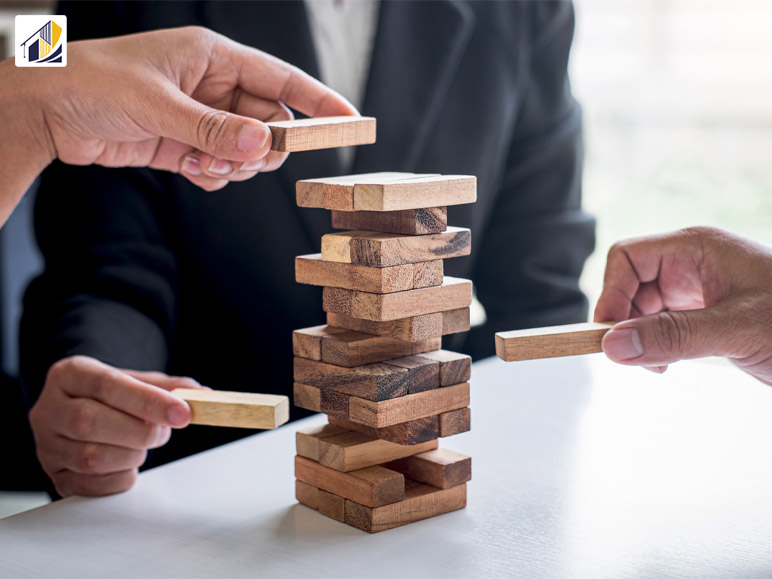If you are a homeowner, then you might think you are safe with just house insurance. Think again; don’t leave your home vulnerable. Without a reliable risk management strategy, your precious house and valuables might be exposed to dangerous risks.
Discover the secrets to ensure the safety of your property. In this article, let’s uncover What is a risk management strategy you could use to protect your home. I’ll also provide you with some secret strategies to create a good house risk management plan.
What Is A Risk Management Strategy You Could Use To Protect Your Home?

Owning a house is the dream of every American, and it also comes with many responsibilities. Remember, with great power comes great responsibility. If you are a house owner, then you have to create your own risk management plan.
The risk management plan does not only apply to corporations or businesses; it is also a crucial thing for a homeowner. Owning a home means you need to identify the would-be risks and take action to diminish them. There are several risk management techniques to protect your house, your hardcore investment, and your loved ones.
9 Risk Management Strategies For Homeowners

If you are wondering what to do to protect your home, then safeguard your home with these 9 risk management techniques. If you own a home, then you need to check these secret risk management techniques below…
1. Identifying The Risks
First, you need to understand the risks to your home. Your precious home might be exposed to dangerous threats, including natural hazards (earthquakes, cyclones, floods, wildfires, etc) or anthropogenic risks (Human-caused) like theft, accidents, vandalism, etc. You need to identify these risks to create a plan for house risk management.
2. Sufficient Coverage (Insurance)
Planning home insurance is the groundwork of risk management. The insurance not only provides financial protection to fight against financial menaces but also supports you in rebuilding your empire. This is the foundation for creating a risk management strategy.
When choosing insurance, you need to check the coverage terms and conditions. You can take advice from a financial expert to choose the perfect insurance coverage for your home. Also, make sure to add liability coverage, which protects you and your loved ones in case someone gets injured on your property.
3. Maintenance Property Regularly
Conducting frequent maintenance is one of the crucial components of risk management. Try to inspect your property and its structure, including plumbing, electrical systems, all mechanisms, and most importantly, roof and wall structures. If you find something unusual, contact a mechanic to fix the problem as soon as possible to prevent any potential risks.
4. Disaster Readiness
This is a very indispensable thing to do in a home risk management plan. First, identify your geographical location. For example, if you live near the sea, you may face several natural hazards, including Hurricanes, Tsunamis, Landslides, coastal erosion, earthquakes, flooding, etc.
Make sure to plan for disaster preparedness. The preparedness plan includes multiple escape routes, emergency equipment, and necessary supplies. Don’t forget to register your home with your local emergency services and community resources.
5. Security
Installing a security system is now an essential thing to do while making a house. These security systems can help you fight against burglaries and break-ins. Install strong doors and windows with robust locks. Now security systems come with inbuilt alarms and cameras with AI technologies. Don’t forget to use cameras in front of the main and back doors.
6. Sufficient Lighting
Okay, this might seem like an odd thing in a home risk management plan, but good lighting is essential for preventing accidents. Install adequate lighting inside and outside to prevent risks, including the risk of trips, slips, and other misfortune. Make sure to install good lighting in staircases, primary doors, attics, entrances, and hallways.
7. Safeguarding Against Water Damages
Water damage is the most annoying and common threat for every homeowner. Believe me, these dames are very costly. Inspect your roof, gutters, and plumbing regularly. Ensure appropriate drainage from your house. Try to install a better drainage system, like sump pumps, backflow valves, or downspouts, to prevent any water damage and house flooding.
8. Safety For Your Child And Pet
Now here comes personal safety. Nowadays, children and pets are the most valuable things. You can install childproof cabinets and double-check all appliances/furniture to prevent any mishaps. If you have a pet, then try to create a pet-friendly space and take extra precautions to secure the safety of your pet.
9. Valuable Documenting
This is a tip for you, in case any burglary happens, having photographs or videos of your belongings can help you get an insurance claim. This might sound stupid, but in America, many insurance claims get rejected every day due to a lack of evidence. So, don’t forget to take photos or videos, purchase bills of valuables, and keep records of valuable items.
CONCLUSION

In the end, I cover these nine house risk management strategies in this ‘What is a risk management strategy you could use to protect your home?’ article will help you create the best risk management plan for your house. The risk is fundamental to any asset or investment. You must know how to manage them to prevent any mishaps or accidents. If you have any other questions regarding this article, feel free to ask me in the comment section. Also, read these articles below.
Additional:
- What Is ARV In Real Estate
- What Is A PUD In Real Estate?
- How Much Money Do You Need To Start A Real Estate Business?


